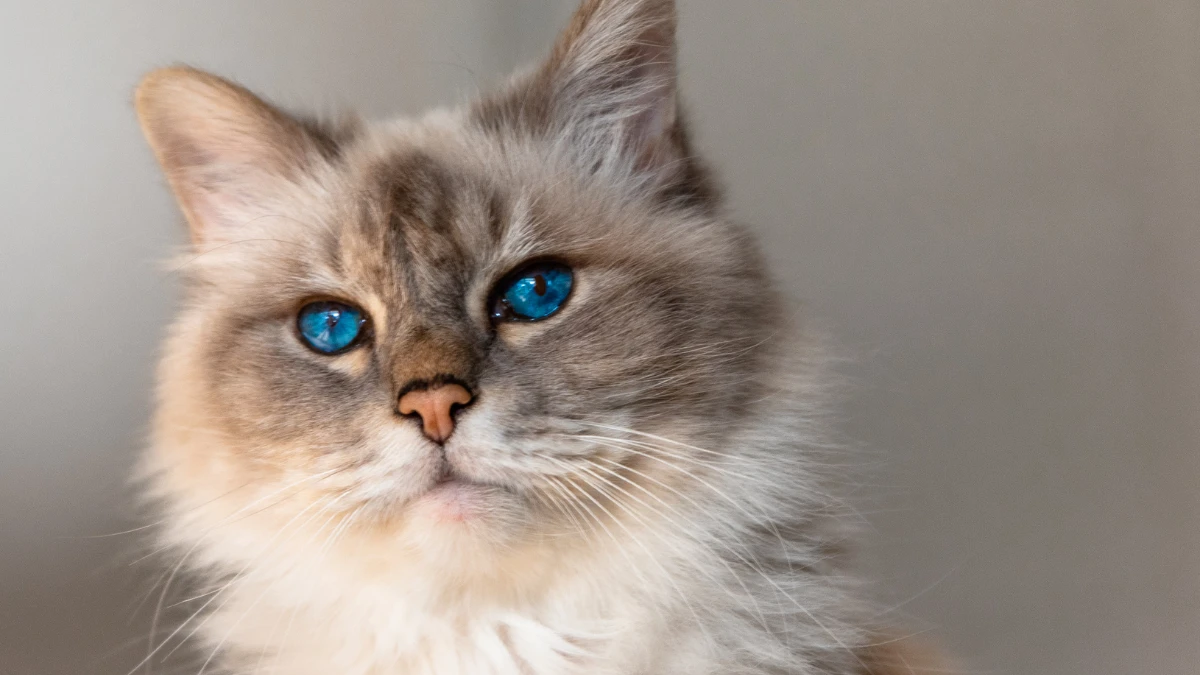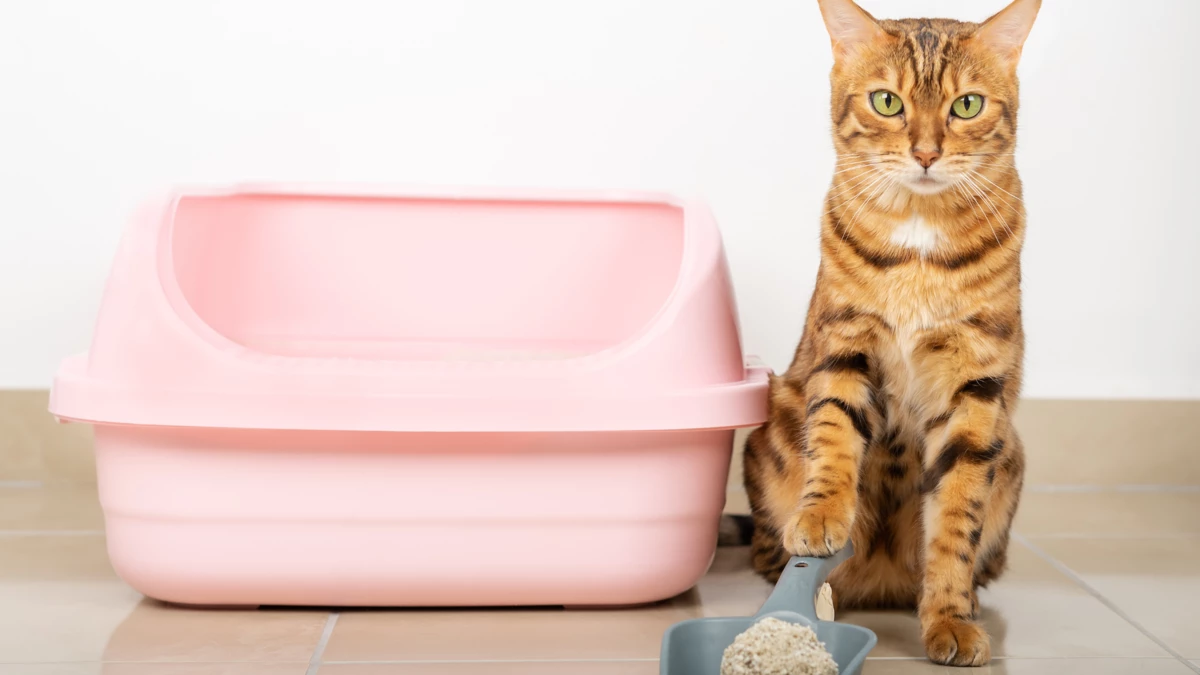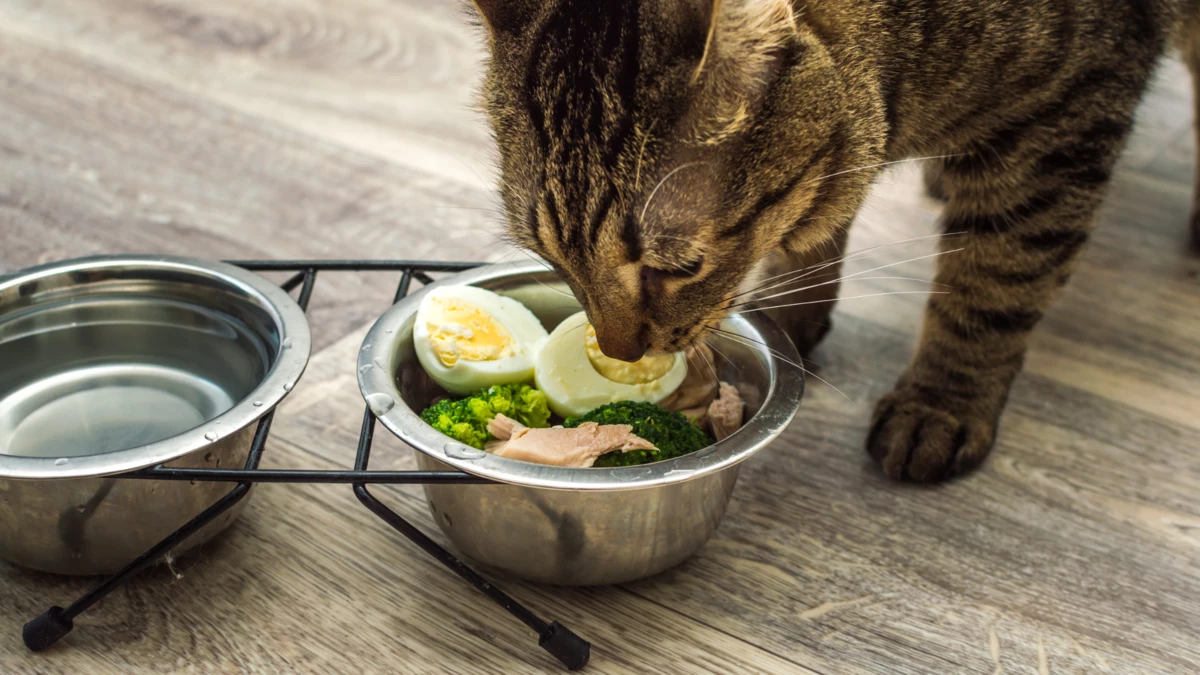Why Do Cats Have Whiskers?

What would your cat do without his whiskers? From an aesthetic point of view, it would certainly be a little less cute, but the mustaches play an essential role! They are your kitty’s ultimate sensory tool and although they look like hairs, they are thicker and longer than normal hairs, they are actually extremely sensitive radars.
Why do cats have whiskers?
When we draw cats, we place their whiskers on either side of their snout, but did you know that they also have whiskers (called vibrissae) on the rest of their body and that they each have their role to play:
- The whiskers on the sides of your cat’s snout are called mystacial whiskers . Cats use these whiskers to measure their surroundings, like a sort of built-in tape measure. They have 12 of these perfectly symmetrical whiskers on each side of the snout, which help them determine if they can fit into an opening.
- Around their eyebrows are the supraorbital whiskers . These whiskers help protect your cat’s eyes and detect surrounding movements. He can thus close his eyelids and protect his eyes from injury.
- Along the chin, we find the genal whiskers . They fulfill a similar role to the supraorbital whiskers and are particularly useful when your cat prowls in tall grass and bushes. They give him the signal to blink and thus avoid damaging them.
- The whiskers on the back of their forelimbs, above their legs, are called carpal whiskers . Although domestic cats are well fed, they sometimes feel the need to hunt and their carpal vibrissae help them a lot. Cats have excellent distance vision, but they struggle to see details up close; they may therefore have difficulty distinguishing prey which is very close to them. The carpal whiskers help them detect prey, smell it, then pounce on it and squeeze it in their claws.
How many whiskers does a cat have?
The number of whiskers in a cat varies from one individual to another, but there are generally between 8 and 12 vibrissae on each side of the snout. These are hairs that are stronger and thicker than the rest of the coat, also composed of keratin. The area where the cat’s whiskers are located is particularly rich in nerve endings, which explains the extreme sensitivity of these organs.
A cat does not only have whiskers around its nose, vibrissae are also present above its eyes and on the back of its paws above the pads. Dive into the intriguing world of cat emotions as this article explores the subtle feline jealousy signs. Uncover the behaviors and cues that may suggest your cat is experiencing envy, providing insights into the complex and nuanced emotional landscape of our feline companions.
How does the cat move using its whiskers?
Measure the width of a passage
Thanks to the vibrissae that dot its body, the cat is perfectly aware of its own width and can determine whether or not it is possible for it to squeeze through a narrow passage. As we know, cats sometimes have the astonishing ability to slip into tiny gaps!
This explains why a cat’s whiskers are generally so long: they help it measure its own height!
Detect air variations
With its whiskers, the cat can sense variations in the air around it. He can thus determine the strength and direction of the wind: if he hunts, he will then make sure to hide his scent by positioning himself facing the wind. Thanks to its vibrissae, the cat is quite capable of hunting at night, since it manages to move around and easily spot its prey, even in the dark. That’s why he’s so good at catching his toys !
He also uses his whiskers to perform jumps. The vibrissae sense the friction of the air, so the cat can adjust the force it instills in its leap. In the same way, it is thanks to its whiskers that a cat will – almost – always manage to land on its legs: the vibrissae help it determine when it needs to turn around to land optimally.
Avoiding obstacles
The cat’s vibrissae located around its nose, above its eyes and on the back of its legs allow it to sense obstacles around it. This particular arrangement therefore prevents it from bumping! This is also why the cat has no problem moving at night: to move forward, it trusts its sensory sensors as much as its eyes.
When the cat finds prey, it uses its whiskers to precisely locate it. Indeed, if the cat has excellent night vision, it leaves something to be desired when daylight comes. And above all, he sees very poorly up close! Thanks to its whiskers, it can more easily catch prey that is right under its nose.
Indicate your mood
To evolve peacefully in its environment, the cat must also be able to communicate its emotions to those around it, whether its owners or its peers.
Whiskers stretched forward will, for example, be a sign of some stress in your cat , while they will be pressed against his cheeks if he is angry. A relaxed cat will leave its whiskers straight and positioned loosely. Of course, you must also analyze the cat’s behavior as a whole to determine its mood: the position of its ears, its tail, its howls, etc.

How to take care of my cat’s whiskers
Whiskers are vital sensors for cats, they should never be cut or trimmed. If a cat were to lose its whiskers, it would lose all understanding of its environment and feel disoriented.
There is no reason to clean your feline’s whiskers. Cats clean theirs during their regular grooming. They usually start by cleaning their face and whiskers, then move on to the rest of the body up to the tip of their tail.
Whiskers that have served their time eventually fall out and are replaced by new whiskers, as your kitty ages they may darken further, this is completely normal. However, if you notice that your cat is losing its whiskers at an accelerated rate or that they are breaking, consider consulting your veterinarian to rule out any underlying medical problems.
Don’t worry if your cat sports curly whiskers! Some breeds, like the Selkirk Rex, have curly hair and whiskers, nothing more normal and classy.
Do a cat’s whiskers grow back?
A minute of inattention, and your child takes the opportunity to give the family cat another “cut”? Don’t panic, although it takes a little time, the cat’s whiskers will eventually grow back. But as your feline needs it to orient itself and move easily, it risks finding itself lost for a while. A bit as if you had to walk with your eyes closed!






